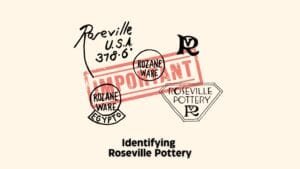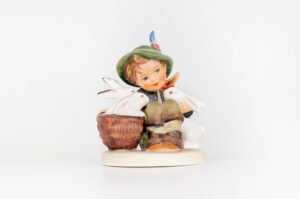When you turn a Sèvres porcelain piece over, looking for a mark to ensure it’s real, you’ll see a series of colorful brand marks on its base. Most of these brand marks are simple alphabets without factory names, logos, or symbols.
This makes determining Sèvres porcelain’s historical significance, age, and authenticity based on just letters difficult for a novice collector. And they often miscalculate its true worth.
This guide shows you how to decode all alphabets and marks using hand-drawn examples to learn Sèvres porcelain’s age, rarity, and other cool facts. You’ll also learn to identify and appraise a Sèvres piece without expert help!
History of Sèvres Porcelain Manufactory
Johann Böttger, the German chemist, had a separate fandom for his unique Meissen porcelain, and the French were eager to follow suit.
Soon, King Louis XV and Queen Marie established the first European porcelain factory, Manufacture de Vincennes, in 1740 near Paris, France. Here’s a brief history of the company:
- 1756: Louis XV’s mistress, Madame de Pompadour, shifted the company from Vincennes to Sèvres for more space and called it the Manufacture Nationale de Sèvres.
- 1759: Although the French King Louis XV became the sole proprietor of the Sèvres factory, he lost all his assets during the French Revolution.
- 1770s: The Sèvres porcelain manufactory switched to a new, hard-paste porcelain formula created by the Bordeaux chemist Vilaris and his friend Jean-Baptiste Darnet. Soft-paste porcelain production also continued till 1804.
- 1774 – 1800: French sculptor Louis-Simon Boizot managed the company’s art direction in 1774. He brought in Empire-style gilded military motifs to Sèvres porcelain under the ‘Neo-Egyptian’ line.
- 1800: Napoleon III appointed a French chemist, Alexandre Brongniart, as the new director at Sèvres. He explored large Neo-classical designs, centerpieces, vases, and dinner sets for diplomatic gifting.
- 1875: The Sèvres factory was moved to the Parc de Saint-Cloud commercial complex in 1875. Since then, it has worked as a national service organization governed by the French Ministry of Culture and Communication until 2009.
Then, in 2010, this factory formed the public organization Sèvres – Cité de la céramique, which continues to make reproduced, ceramic-based Sèvres style porcelain ware.
How to Identify Sèvres Porcelain
You can identify REAL Sèvres porcelain by its soft-paste frit-porcelain bodies, plain or combed textures, and gold gilding. Other standard features are:
- Semi-translucent or whitish walls with a stippling or ruffling pattern at the joints
- Unique bleu-lapis, blue camaieu (cobalt-blue) or bleu-céleste (sky-blue) glazes
- Hand-painted landscapes, battle-scene, portraits, court-life or pastoral event designs
- A vibrant, multi-colored palette with pink, green, gold, white, red and turquoise motifs
- Symmetrical and fluid shapes (inspired by the in-trend Rococo & Neoclassical styles)
- Raised or applied flower and foliage designs
But, if spotting these artistic features tires you, jump to verifying the original glazed Sèvres marks with their interlaced L icons, alphabets, and signs.
Identifying Sèvres Porcelain Marks (Visual Guide)
Real Sèvres porcelain has four types of bottom markings – date marks, limited-edition marks, whiteware codes, and artist signs. These marks were usually glazed onto the porcelainware’s base using a translucent blue, red, black, or green dye.
You can date your Sèvres porcelain piece by checking the alphabets, stamping style, motifs, and date codes of all these established marks. Below, you’ll find details of Sèvres marks:
1. Sèvres Porcelain Date Marks
Dating old Sèvres porcelain isn’t tough because it has date codes on the bottom.
The early 1753 to 1793 Sèvres porcelain ware had a ‘double-L’ logo (for Louis XV) with a glazed, blue-enamel alphabet mark to highlight the dates.
This letter changed yearly and followed a series of 24 letters, omitting the J & W. Here’s a quick year-wise marks chart to date the mid-18th Century Sèvres porcelain marks:
1. 1753 – 1763 Sèvres Porcelain Marks: The 1753 – 1763 Sèvres marks used the alphabets from ‘A’ to ‘k’ inside the double ‘L’ mark.
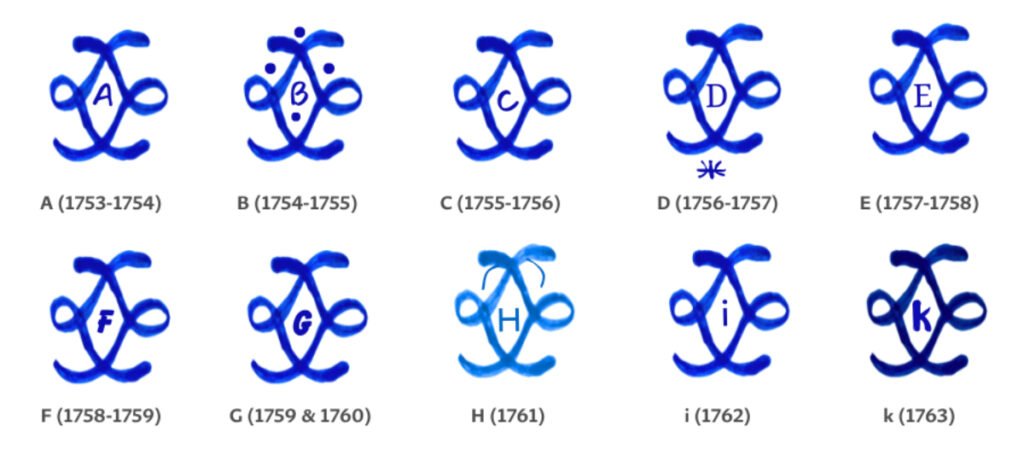
2. 1764 – 1773 Sèvres Porcelain Date Marks: You can spot the 1764 – 1773 Sèvres marks by unique alphabet codes ranging from ‘L’ to ‘u.’
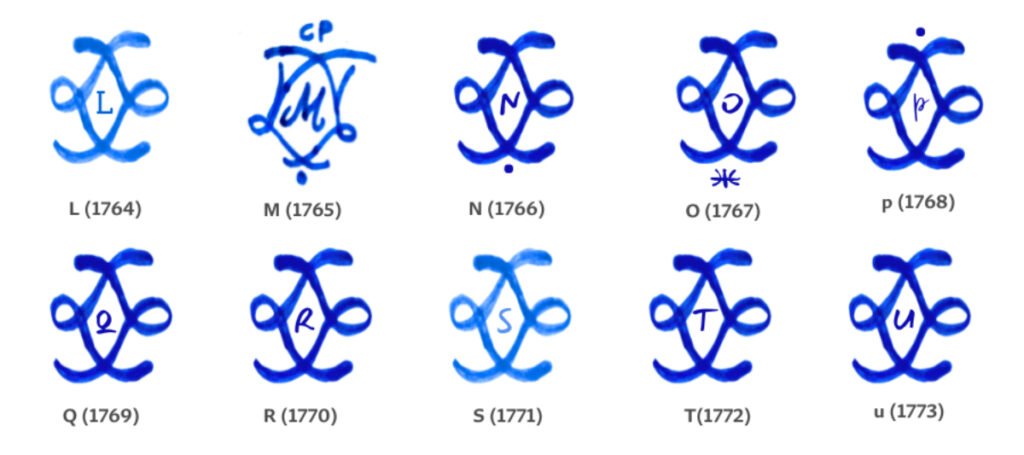
3. 1774 – 1783 Sèvres Pottery Marks: The 1774 – 1777 Sèvres pieces had v to z alphabet codes, while the 1778 – 1783 marks used double alphabet codes from ‘AA’ to ‘FF.’
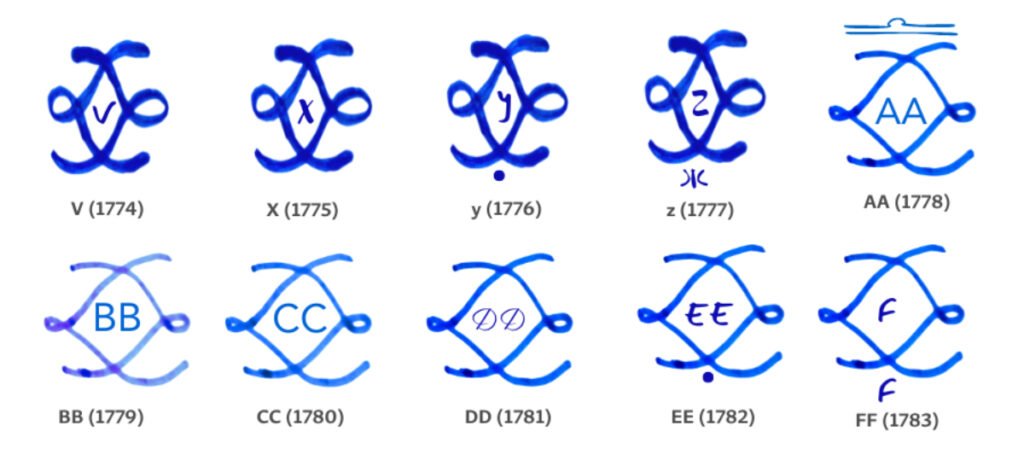
4. 1784 – 1793 Sèvres Porcelain Marks: The 1784 – 1793 Sèvres porcelainware used double letter marks from ‘GG’ to ‘QQ.’

But, after 1793, these simple kite-shaped marks were replaced by copy-righted inscriptions of the fleur-de-luis & other official French symbols.
1. 1793 – 1804 Sèvres Porcelain Makers Marks:
From 1793 to 1804, Sèvres pieces used the RF mark (short for République Française) and the brand’s name in blue cursive letters. Also, these marks didn’t have any date codes or stamping years.


1793 – 1804 Sèvres Porcelain Factory Marks
2. 1814 – 1847 Marks:
The 1814 – 1847 Sèvres porcelain pieces have a mix of illustrated royal cipher and fleur-de-lis marks as seen on King Louis XVIII’s official coat of arms.
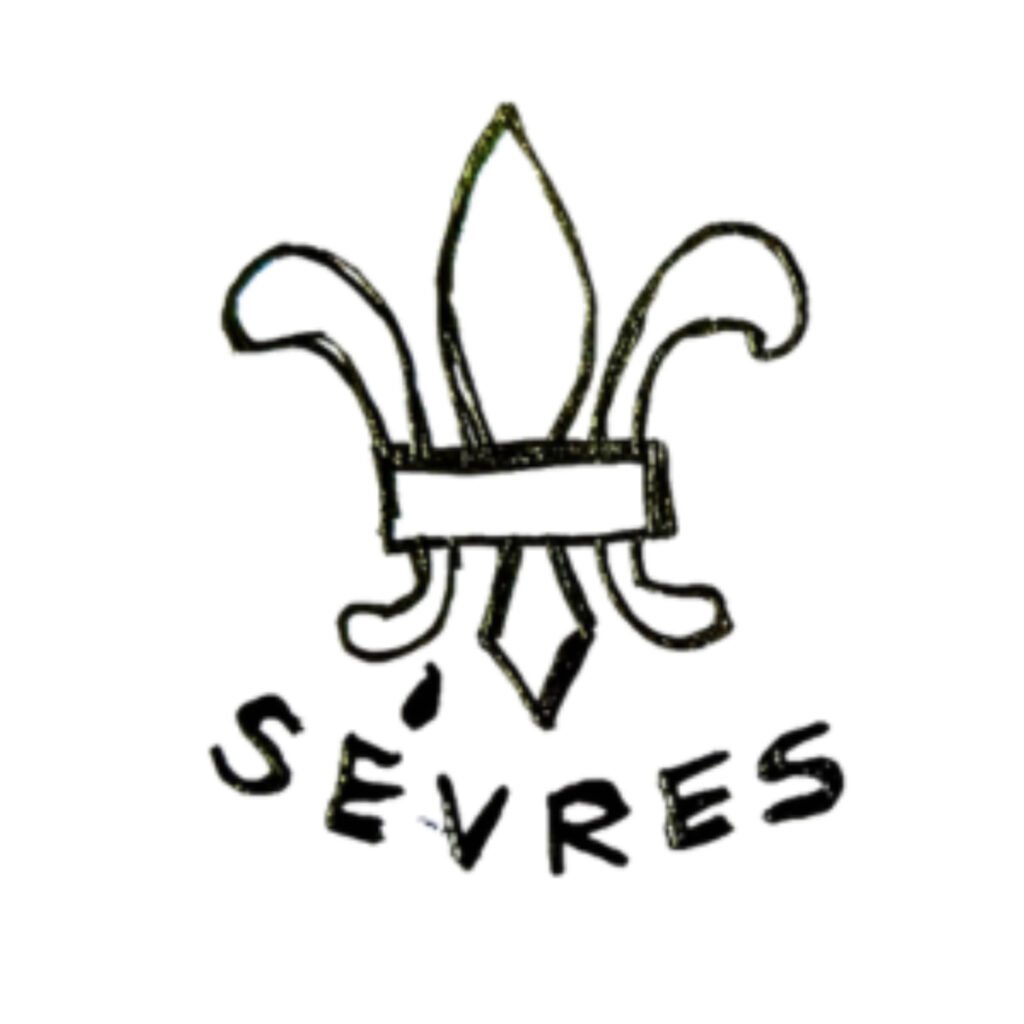

1814 – 1847 Sèvres Porcelain Ware Marks
3. 1848 Sèvres Porcelain Mark:
The Sèvres manufactory introduced two new brand marks in 1848. One used the RF mark with the company name and date code, while the other had a circular ‘RF’ logo with the brand name and date inside it.
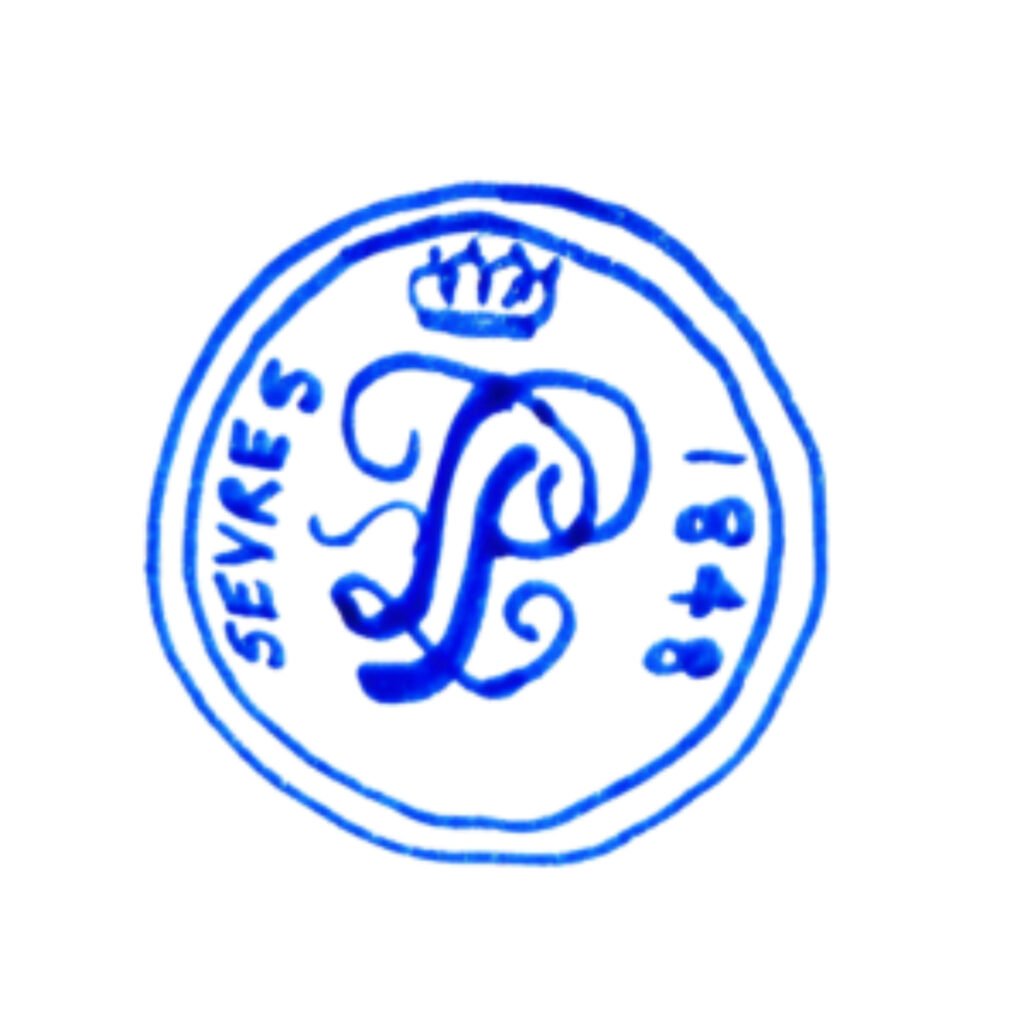

1848 Sèvres Porcelain Ware Brand Marks
4. 1850 – 1870 Sèvres Mark:
The first French President, Napoleon III, introduced the ‘French gilded crown’ mark in the 19th Century. This mark had a simple red-colored crown icon with an ‘N’ (for Napoleon III) & year date under it.

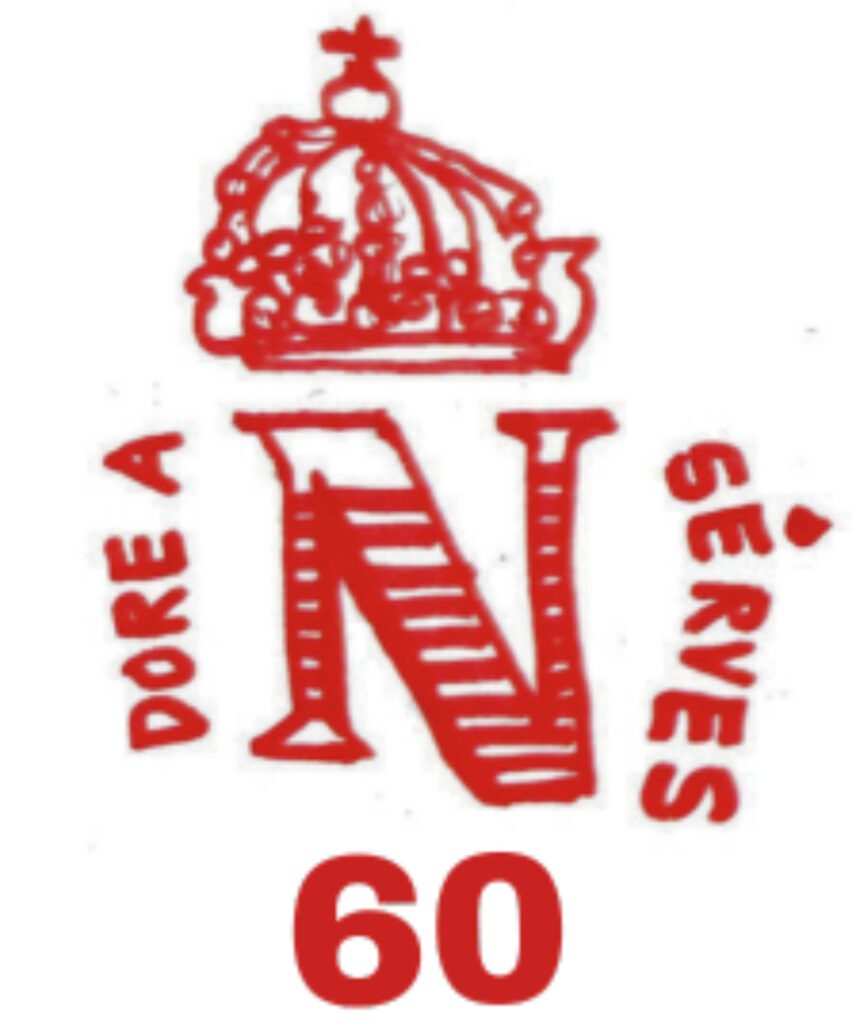
5. Sèvres Porcelain Marks 19th Century
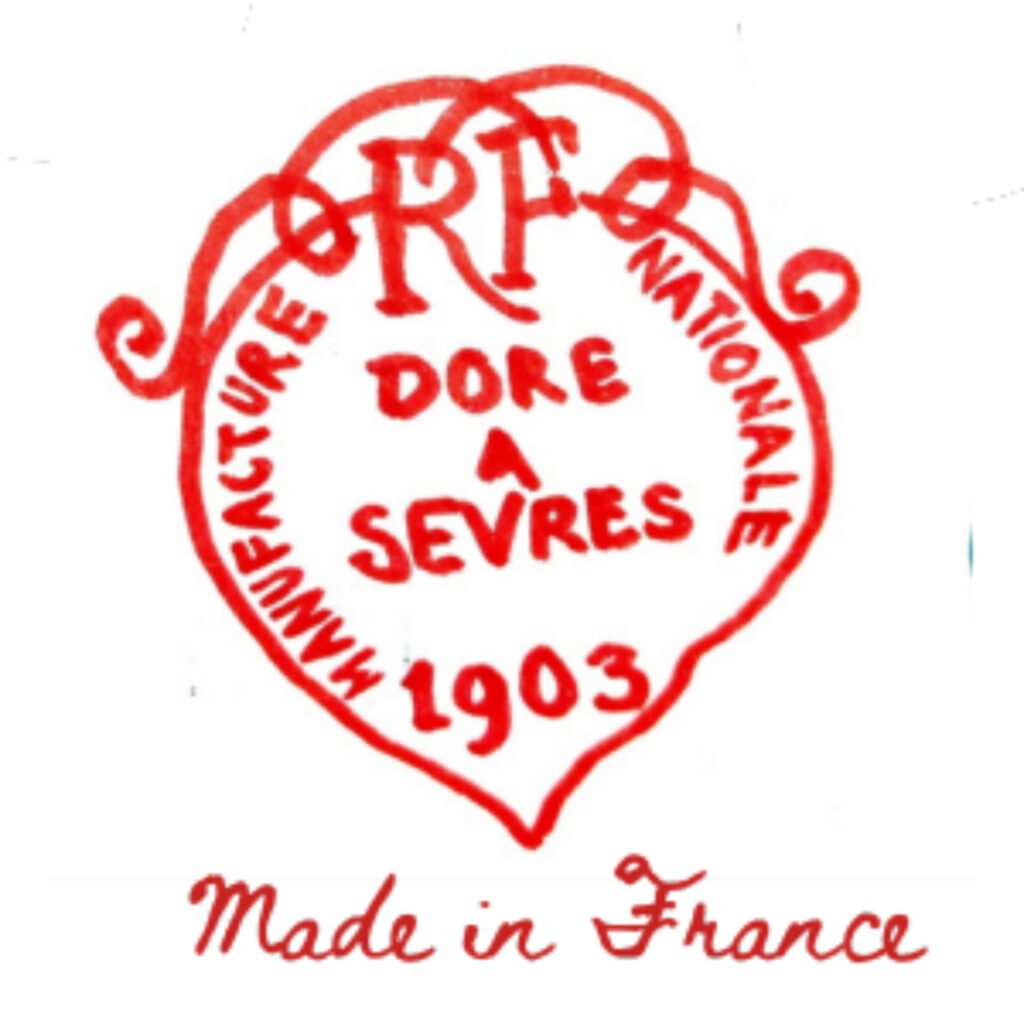

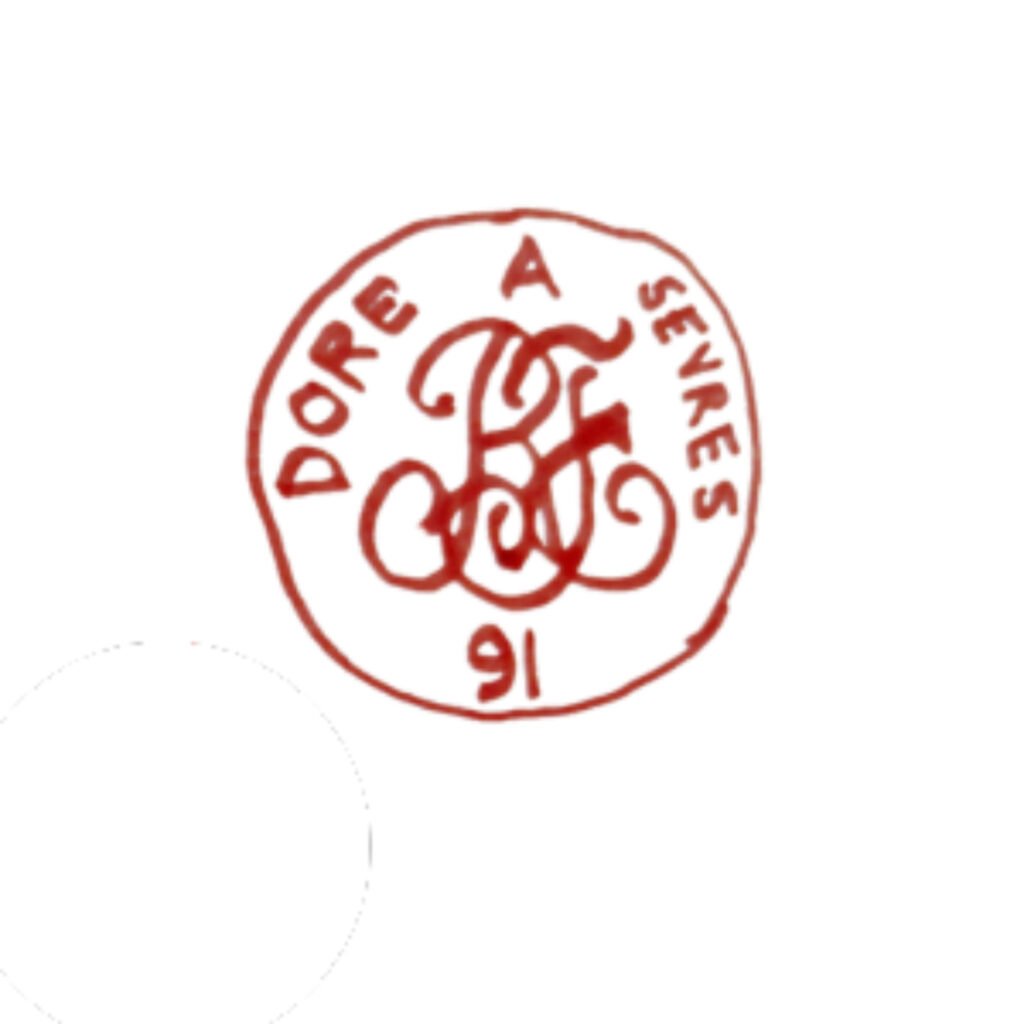
Vintage Sèvres porcelain ware dated 1871 – 1890 and onwards has a tear-drop-shaped mark with an ‘RF’ icon and year stamp in red glazed letters. But one exception is that of the 1873 Sèvres pieces that used a green double-L mark with the brand’s name inside it.
In contrast, the post-1900s pieces used a simple maroon-colored circular mark with the ‘RF’ symbol, company name, and year stamp.
You may also find the following green-glazed marks on the 1900 – 1915 mass-produced Sèvres pieces:
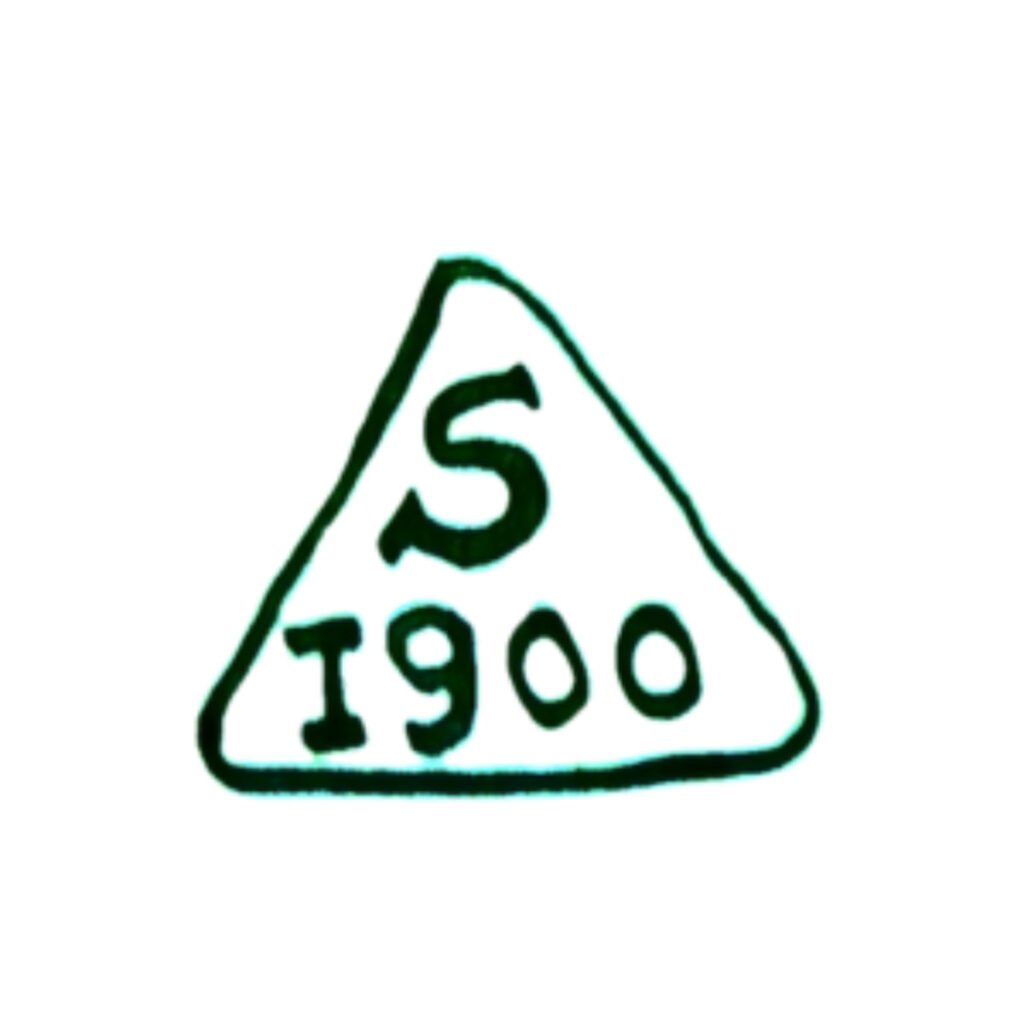
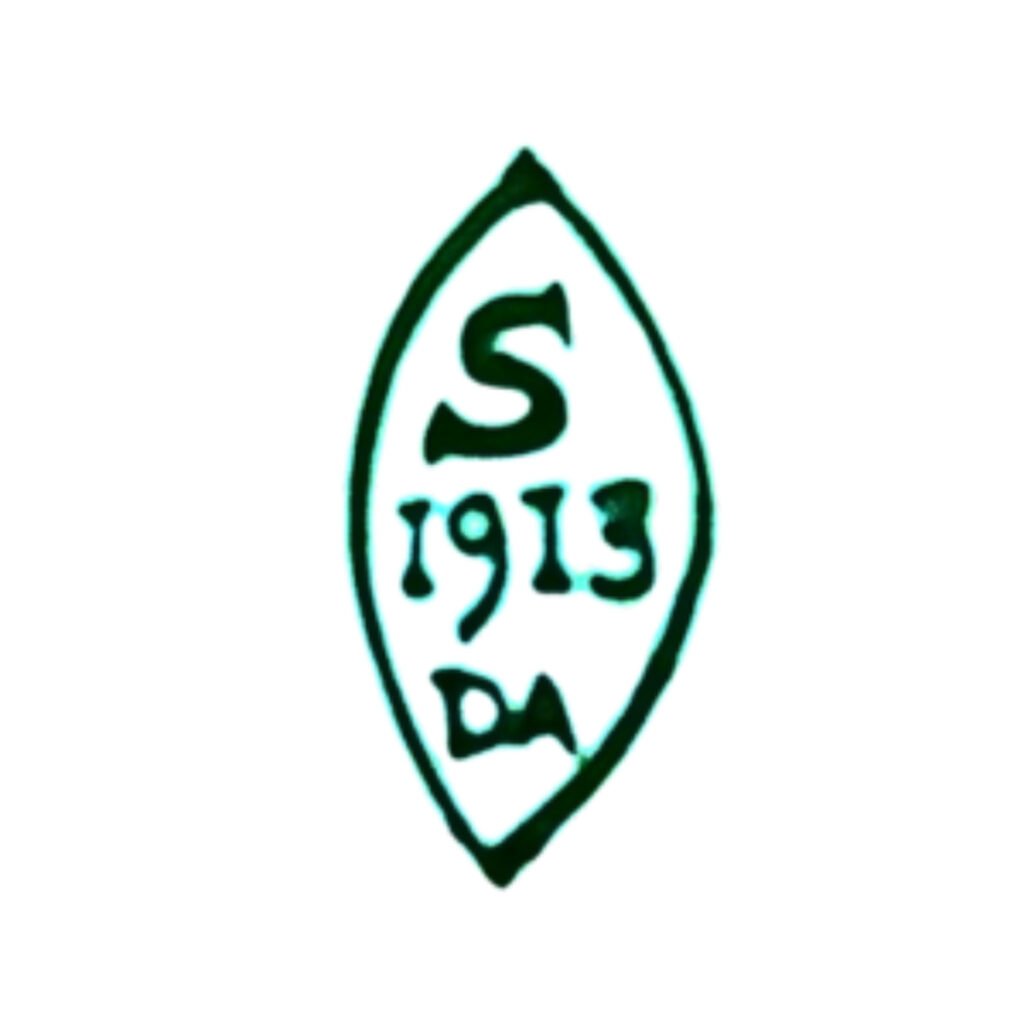
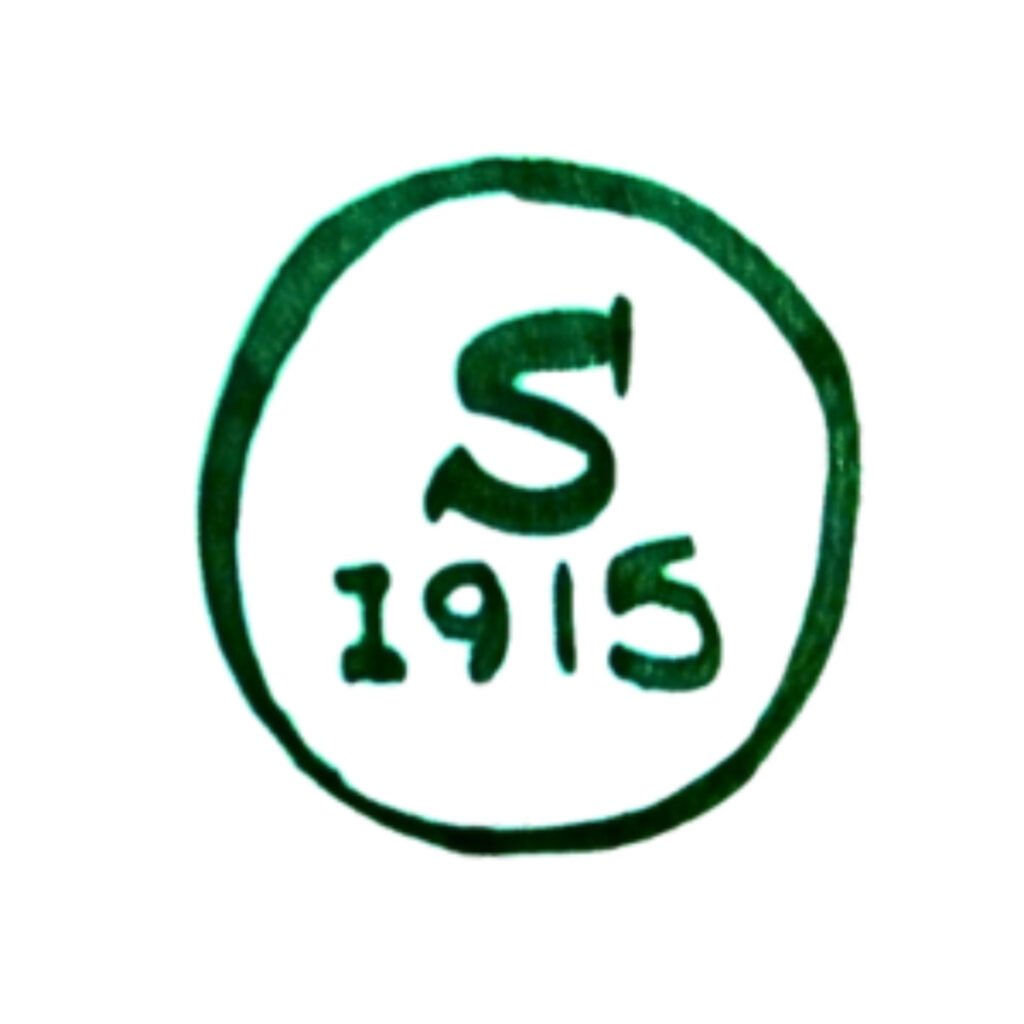
2. Rare Sèvres Porcelain Marks
Apart from the above commonly-found brand marks, the Sèvres Porcelain Co. reserved some special seals and interlaced L marks for gold-gilded or palace-range porcelain ware.
These marks are usually circular and have a heraldic French crown icon and the brand or palace name in red or blue glaze. Here are some hand-drawn examples:
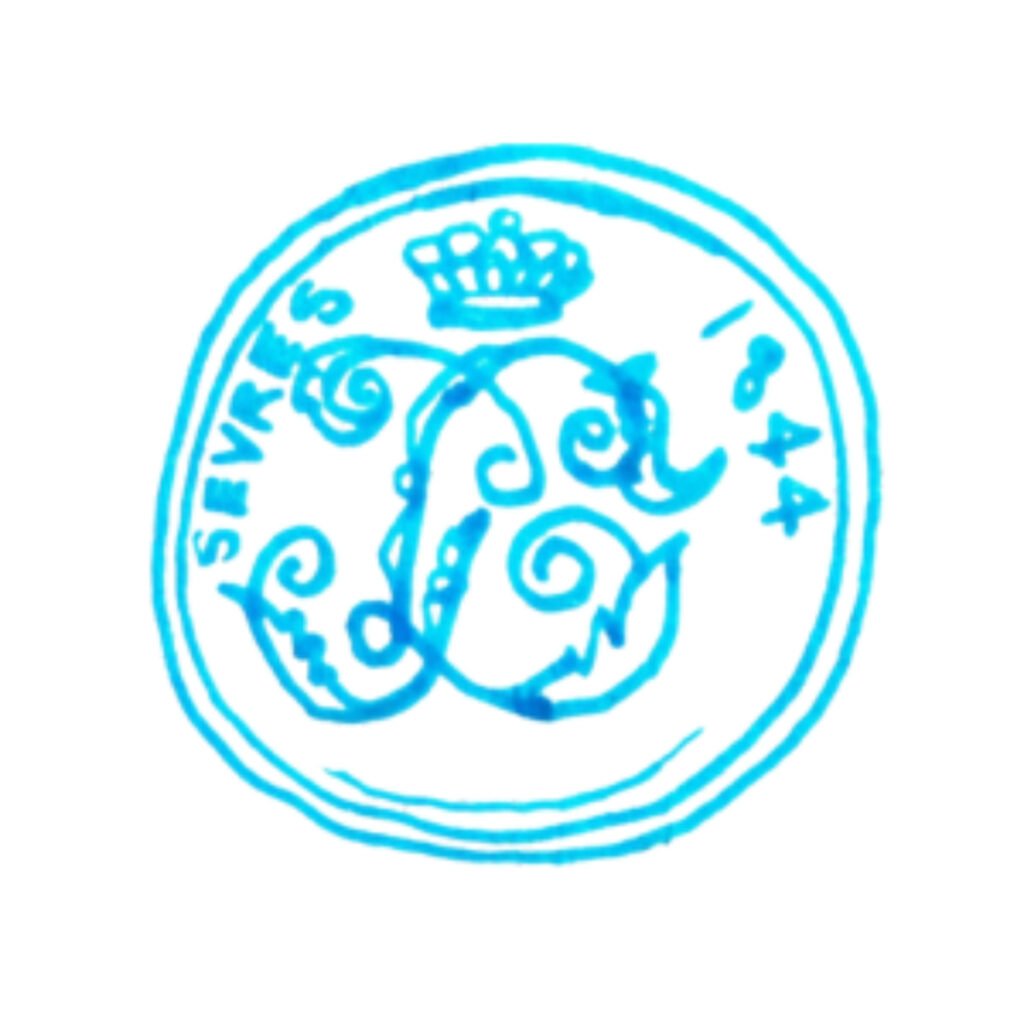
Exclusive Sèvres porcelain pieces dated 1844 & 1845 have a double block-letter ‘L’ mark (standing for Louis XV & Louis XVI) with the heraldic crown icon and year.

The “Château des Tuileries” Sèvres mark was used on a new 19th Century Sèvres Porcelain made for the Tuileries Palace in Paris.

Rare 1982 – 1983 Sèvres pieces have this national service organization mark, certified by the French Ministry of Culture and Communication.
3. Sèvres Whiteware Marks
In simple terms, Sèvres whiteware is the off-white kaolin porcelain dinnerware and jardinière produced for royal use from 1837 to 1890. It was also quite textured and had smooth, unglazed rims, unlike the original one.
Most of this court-use porcelain was unmarked. But you might spot some small, green date codes with the ‘S’ and year mark on the large or intricate pieces.
You can get an idea from these handmade samples I’ve drawn for you:

Note that the ‘S’ stands for the Sèvres factory, while the last two digits (37 to 90) indicate the manufacturing year. For example, 37 stands for 1837, 38 for 1838, etc.
4. Sèvres Porcelain Artist or Designer Marks
The Sèvres Porcelain Manufactory worked with various artists in the 18th & 19th Century. You can find these artists’ original signs and monograms on Sèvres pieces.
These signatures can tell your porcelain’s history, quality, design style, and manufacturing era and also raise your Sèvres piece’s value. So, don’t forget to look closely for rare artist signs on your piece. Here are some renowned artists and their signs:
1. Francois Boucher
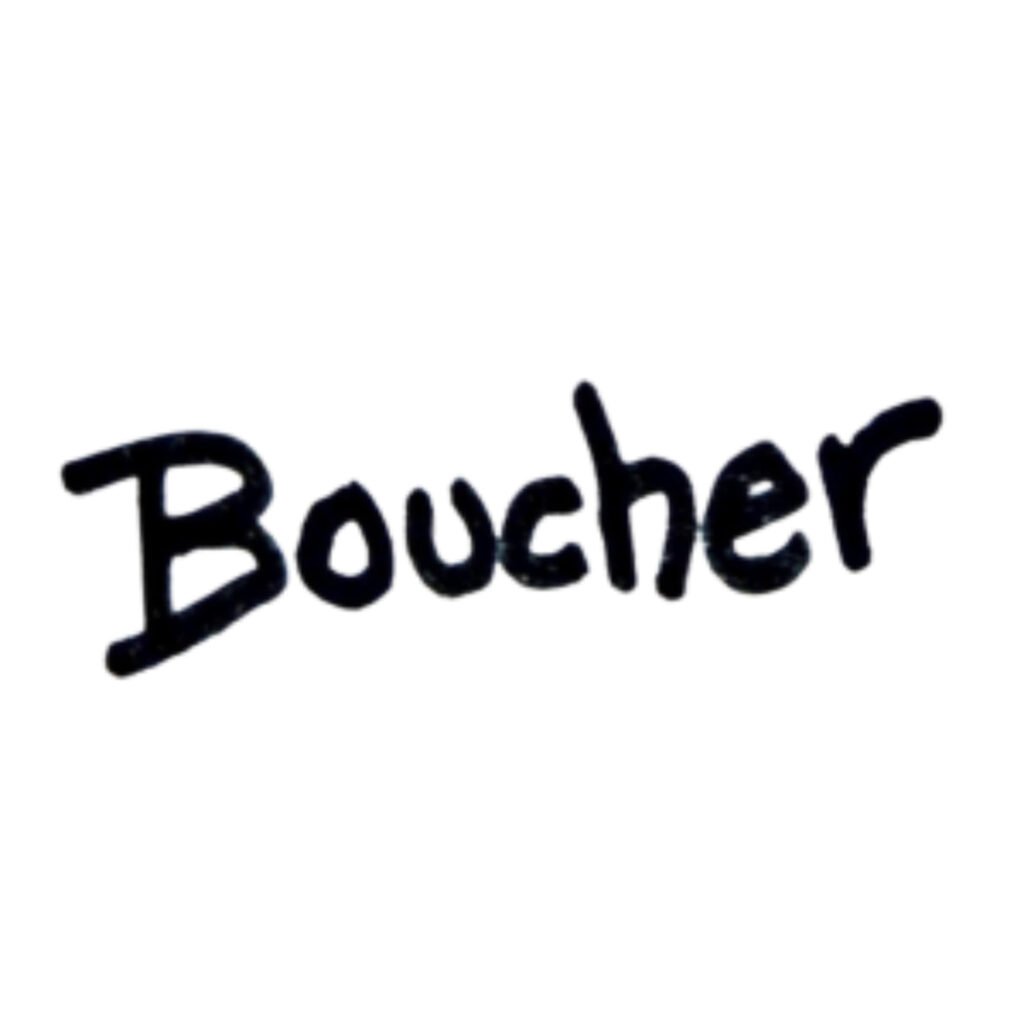
One of Madame de Pompadour’s favorite landscape artists, Boucher joined Sèvres as a short-time figurine and dinnerware designer in the early 1740s. During this time, he worked on Rococo-style cherubs and floral motifs with white or pastel-colored porcelain.
2. Albert Ernest Carrier Belleuse
French sculptor Albert Ernest Carrier Belleuse joined the Sèvres factory as their lead art director in 1876. He’s best known for introducing graceful, realistic, presidential and leadership themes to floral Sèvres pottery.
However, Albert didn’t sign any of his pieces. Instead, the pottery bears the signs of other potters and sculptors like Auguste Rodin & Jacques Bachelier.
Today, most of Albert’s work is displayed in museums like the Sèvres Museum, Metropolitan Museum of Art & the Philadelphia Museum and isn’t available for common auctions.
3. Jean Arp
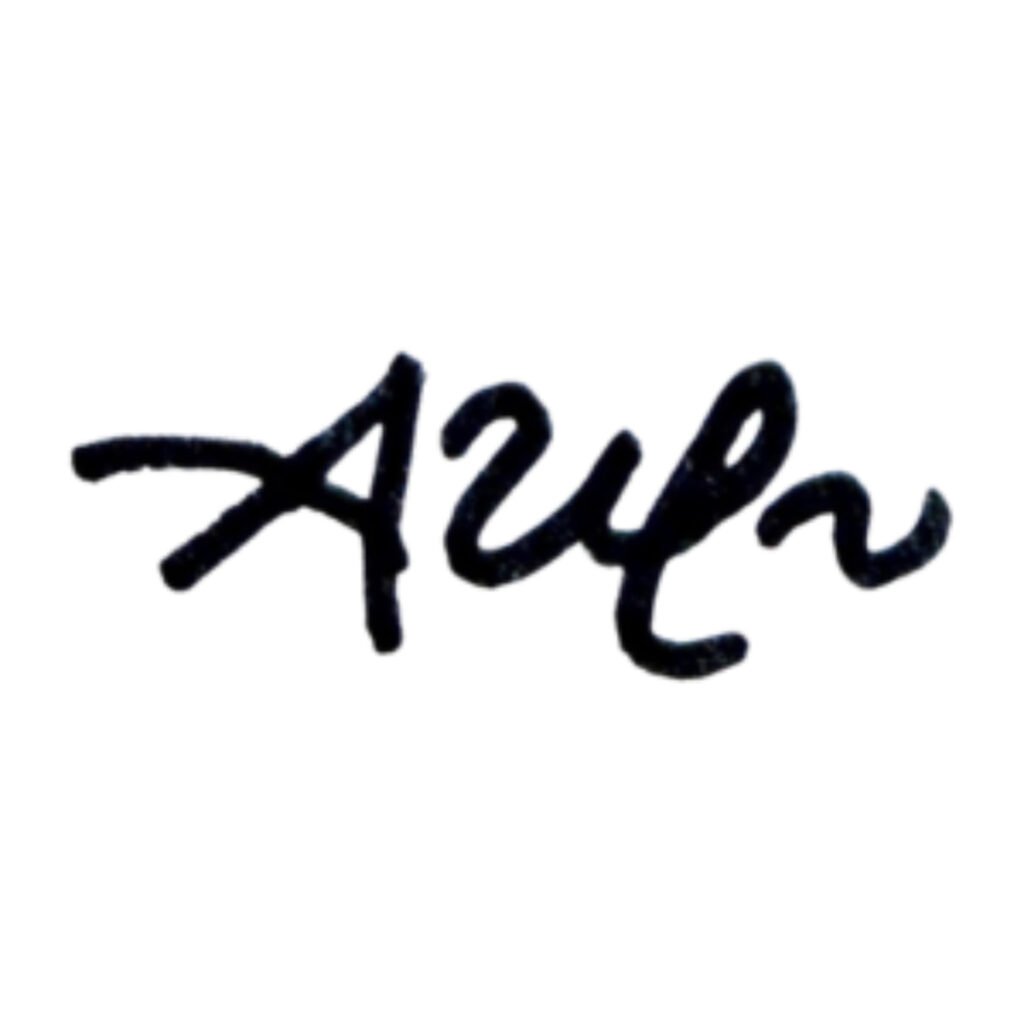

Jean joined the Sèvres factory through their renowned Sèvres-Lacour workshop in 1957. He mostly worked on the brand’s “Les Constellations” series, which combined Jean’s biomorphic paintings with shiny gold or platinum accents.
The company also worked with other popular artists like A Brogniart, Théodore Deck, and Roberto Matta, among others. This Sèvres Porcelain artist marks guide will tell more about them!
Spotting Fake Sèvres Porcelain Marks
Due to its immense popularity and value, Sèvres porcelain has always been on the radar of bogus porcelain makers. And with advanced machinery and printing techniques, the new fake pieces look even more real!
Fake Sèvres porcelain ware also has copied Sèvres style logos and marks, but you can easily spot them with their design and font differences, as shown in the examples below:
1. Fake Sèvres marks have extra year codes, model numbers, stars, and crown marks along the double-l mark.

2. Unlike the original marks, bogus or reproduced porcelain ware has a painted ‘Made in France’ mark.
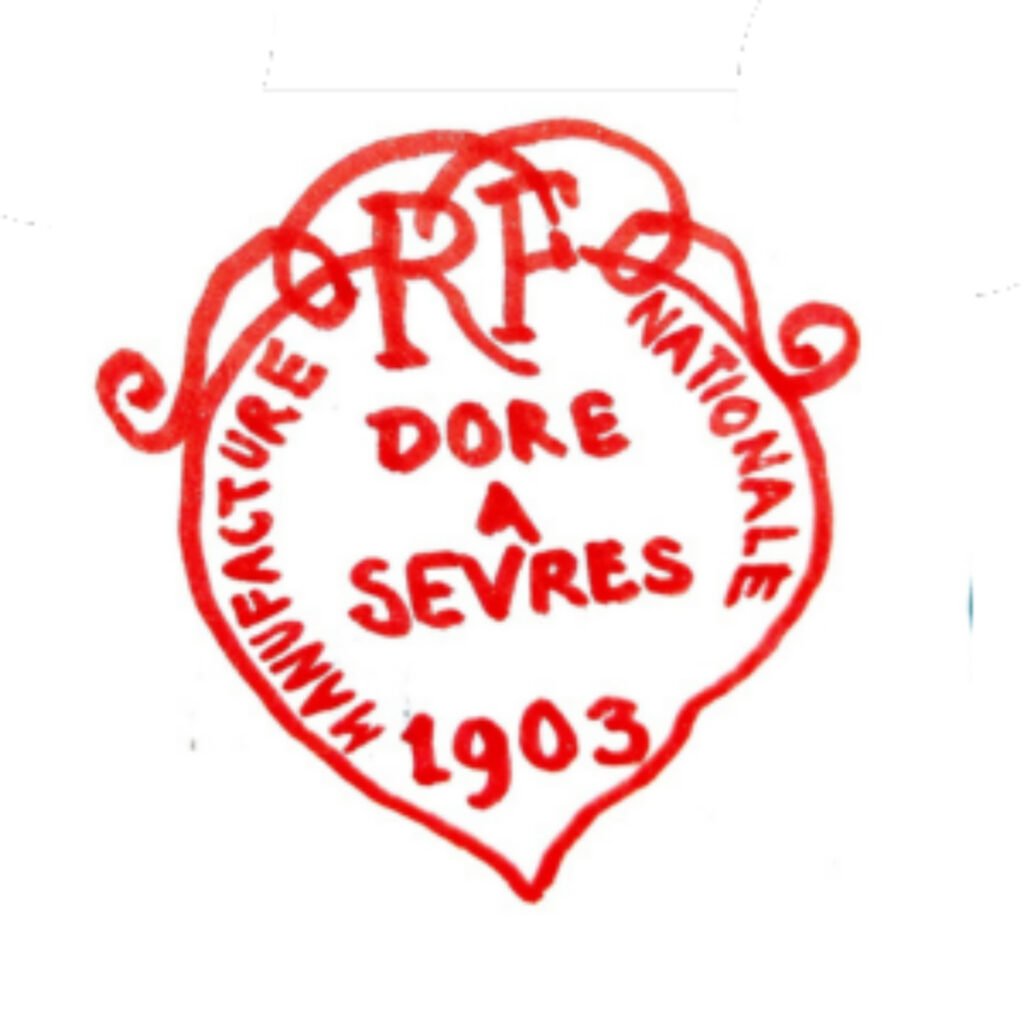
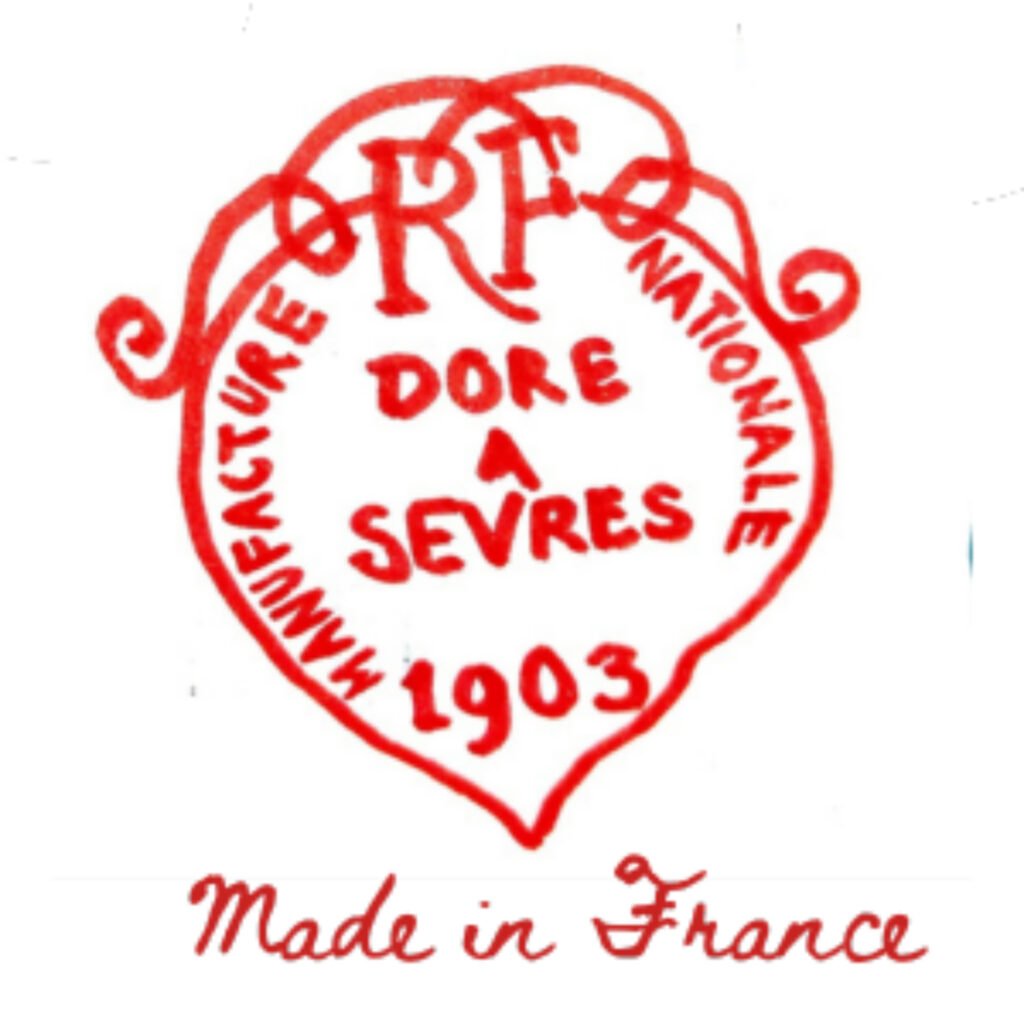
3. A fake Sèvres mark may have a trellis or wing pattern with interlaced L marks, unlike the established marks with clean cursive lines.
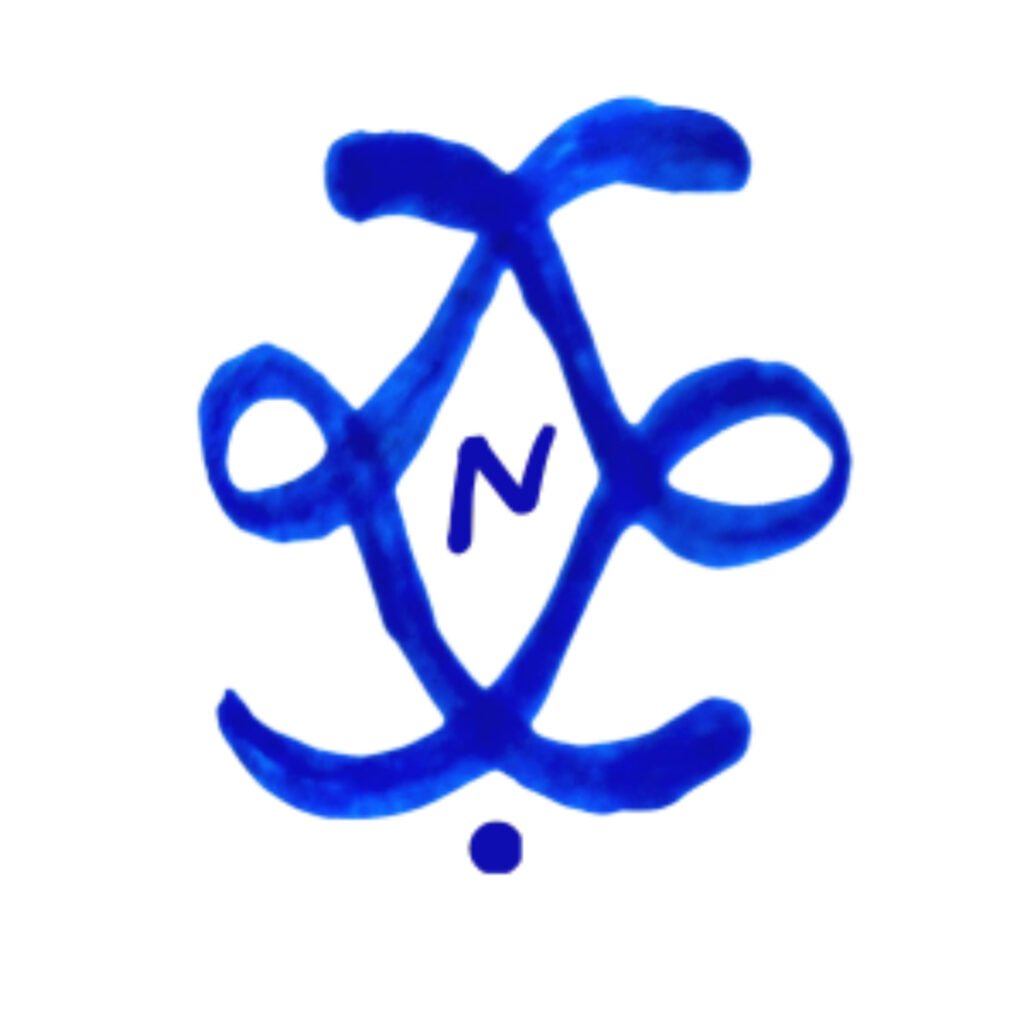
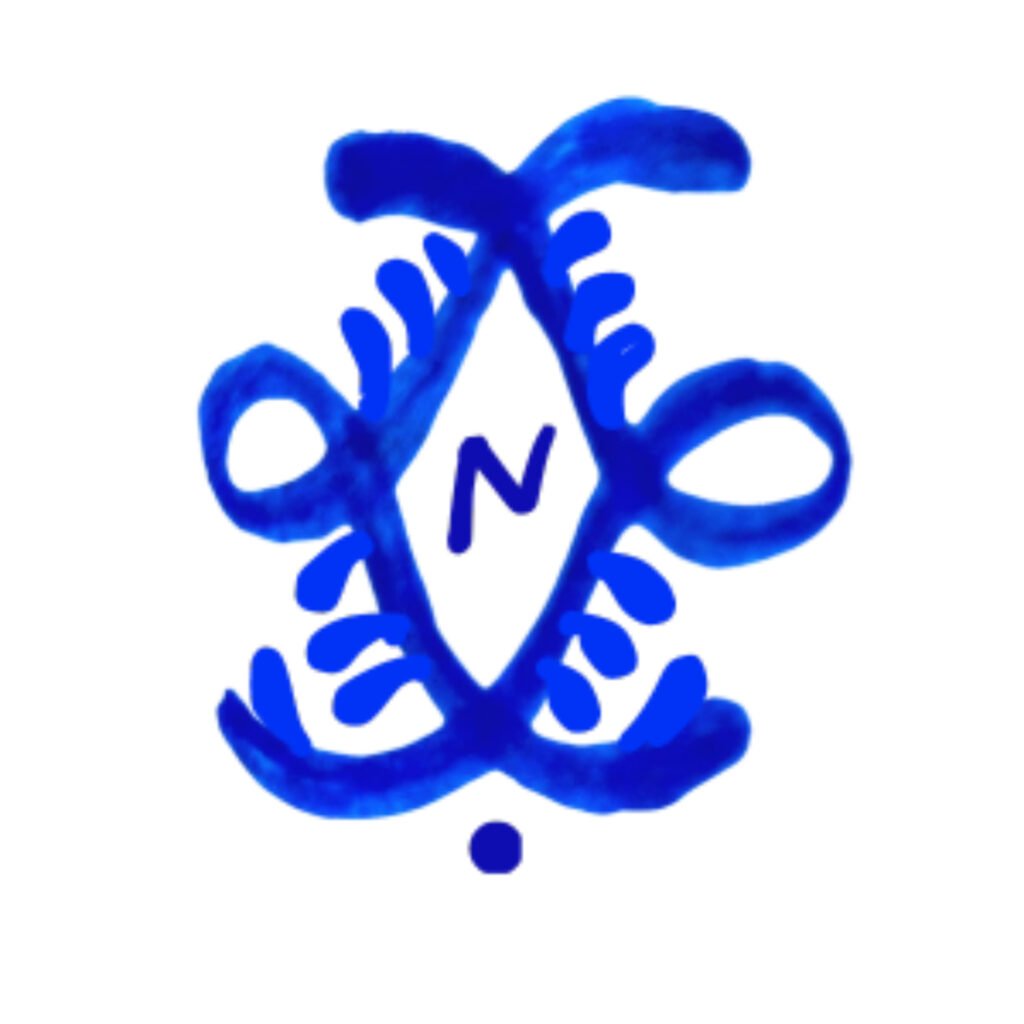
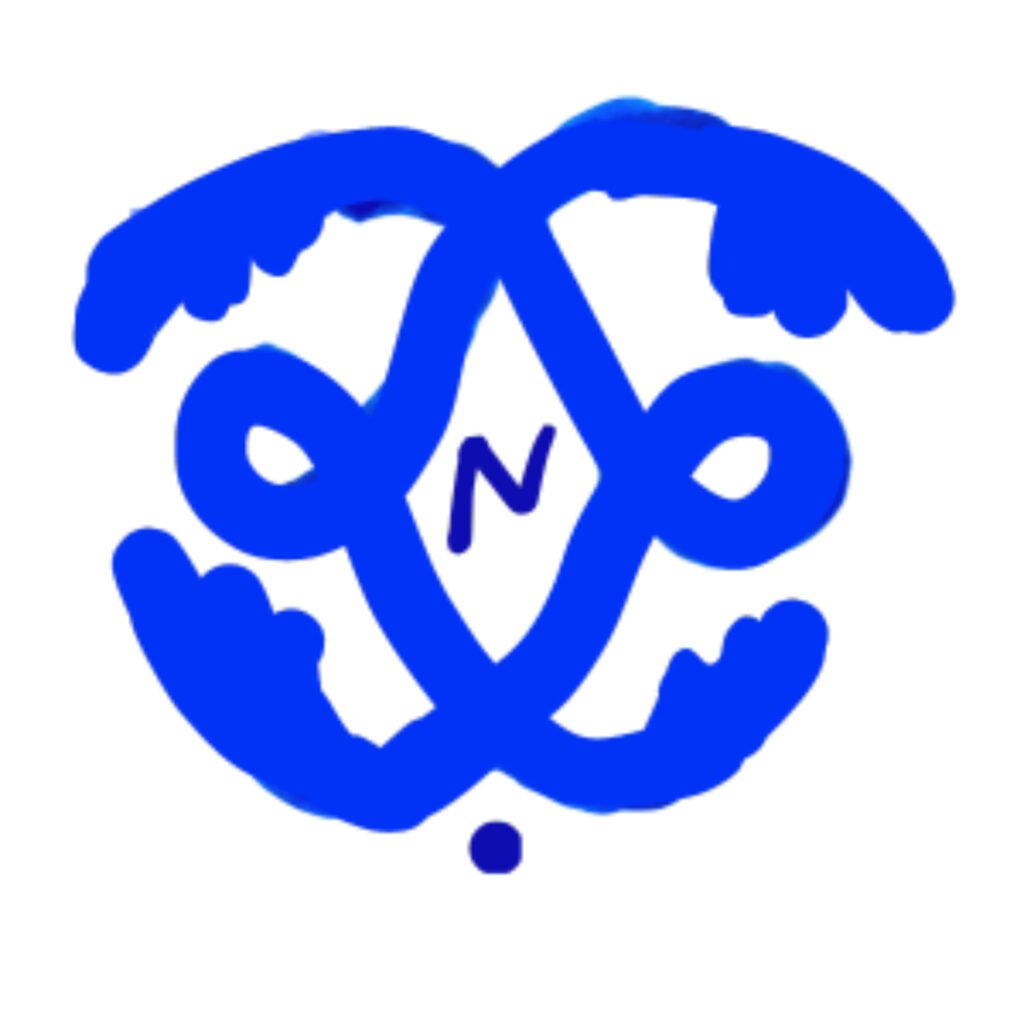
4. Real Sèvres porcelainware has standard blue, red, or green glazed marks. Fake ones might be golden, pink, brown, etc.
5. Fake marks are flat; they have no texture or slightly raised surfaces like the original ones.
6. Reproduced Sèvres marks will have some black spots on their text due to the re-firing process.
Sèvres Porcelain Values Guide (With Real Auction Prices)
The value of vintage Sèvres porcelain varies greatly! You can find an old Sèvres plate or whole dinnerware for as low as $100 on e-commerce sites, while some unusual pieces fetch millions at auction!
Here are a few examples of such unusual porcelain auctions:
- A rare 256-piece Marly Rouge Sèvres Service Porcelain set, commissioned by Napoleon I, fetched a whopping $1.8 million at a Christie’s auction in 2018.
- During a recent Heritage Auctions sale, a pair of signed Sèvres porcelain urns and covers sold for $65,725.
- A Sèvres porcelain ‘Beau bleu’ armorial and ornithological part dinner service set fetched $976,584 (889,000 EUR) at a recent Sotheby’s auction.
These values are crazy! But at the local market, most Sèvres pieces sell for between $100 – $4,000. The final value of such commonly found pieces comes down to these factors:
1. Condition:
Stained, broken, chipped, or faded Sèvres porcelainware fetches 10 – 20% less value than other similar pieces despite the age and design. Also, repainted or reglazed pieces are a big no!
2. Size:
Remember that large 18 – 20-inch plates and figurines cost more than the 5-6” small pieces of the same design and pattern.
3. Pattern:
Old Sèvres porcelainware with intricate “Fond bleu Céleste” or “Carps et fleurs” patterns fetch a greater value than those with simpler fish, flower, and foliage patterns.
4. Age:
Old Sèvres porcelain made in the early 17th Century during Louis XV’s era is more valuable than new 20th Century porcelain. Such ancient porcelain has visible aging signs like slight crazing, surface wear, and gilding loss.
5. Type of Item:
The value of Sèvres porcelain ware also depends on what item it is. Here’s a handy value table of common pieces based on the recent eBay and Etsy listings:
| Sèvres Porcelain Item Type | Estimated Value |
| Sèvres Vase | $250 – $4,500 based on size |
| Urns & Pedestals | $400 – $4,000 based on the set |
| Plates | $200 – $2,000 |
| Bowls & Creamers | $30 – $500 |
| Sèvres Figurines | $500 – $5,000; artist-signed pieces can cost more, even up to $20,000. |
Sèvres porcelainware has specific date codes and marks that will help you identify authentic pieces and their age and value them. Similarly, you can also spot valuable Gzhel pottery and Meissen Porcelain by their marks using my other detailed guides!
Note: This article is intended for informational, educational, and entertainment purposes only. Some images are illustrative and may not represent actual brands, products, or related entities. All trademarks, product names, brand logos, packaging, and other intellectual property referenced remain the exclusive property of their respective owners. Any brand mentions or references are provided solely for descriptive and educational context and do not imply any formal or commercial association.



